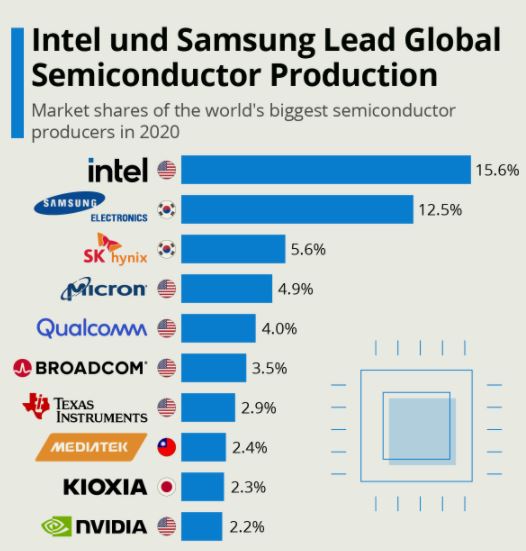10% of the global semiconductors demand comes from the automotive industry. The onset of the current chip shortage lies in covid-induced global shutdowns. The shutdown led to a drastic reduction in global demand for semiconductors. But rather unanticipated, demand for chips recovered in Q3/20 as consumers increased their use and purchase of electronics, especially portable ones. The V-shape recovery in demand for chips then led fab companies to tailor design their facilities for the manufacturing of electronic device chips, thereby largely displacing manufacturing capacity for chips used in automotive, such as sensors, controls, power management, etc. This displacement created the most notable shortage of chips supply for automotive companies, but also for electronic device makers, including Apple and Samsung.



